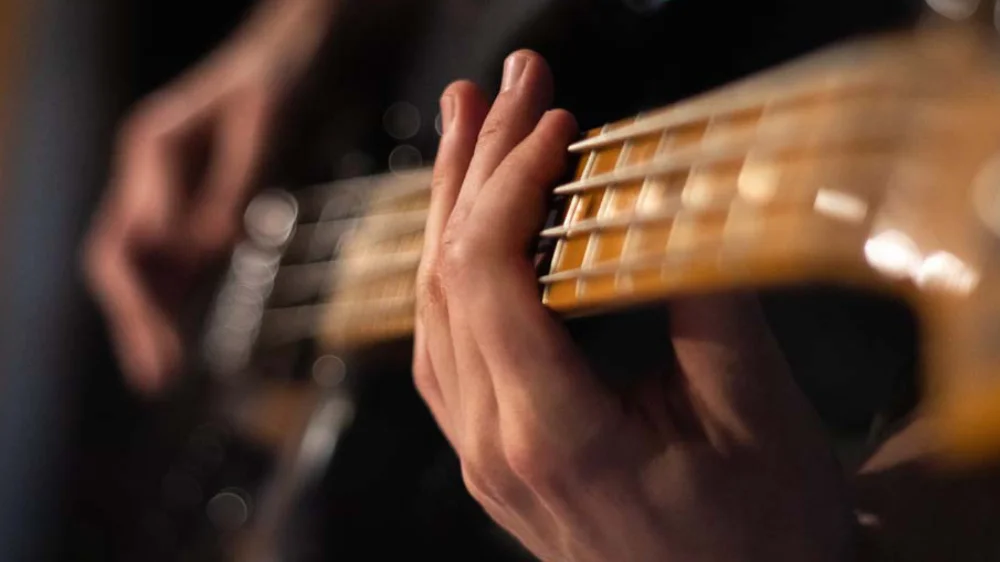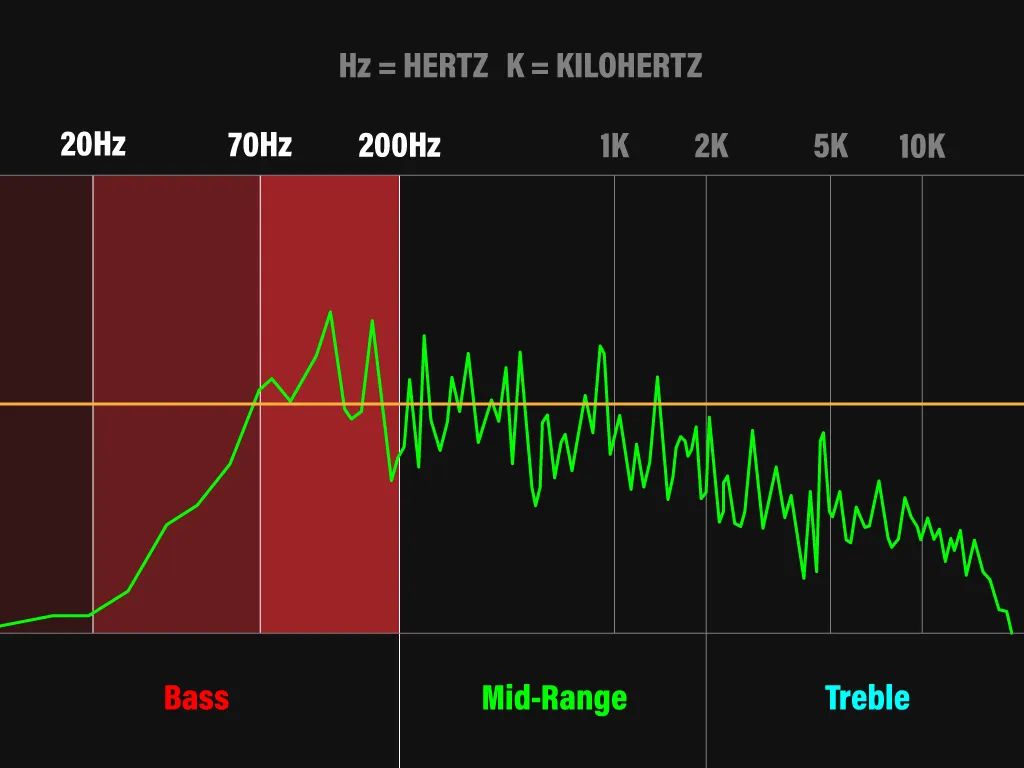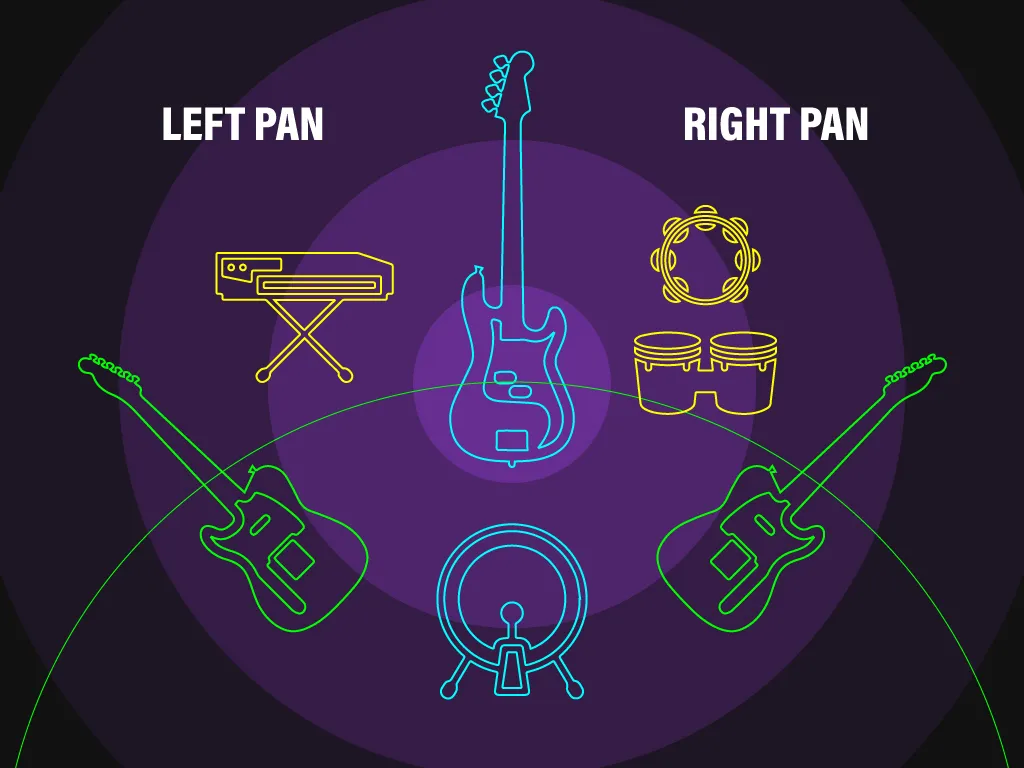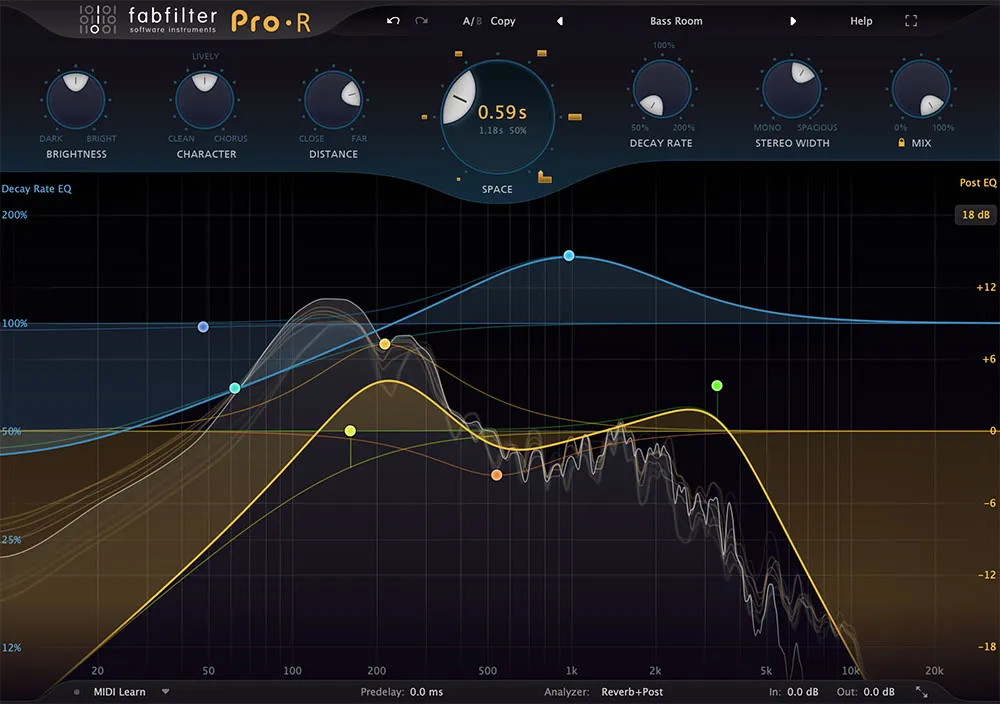
When you curse your next door neighbour for playing very loud music, it’s the low frequencies that are likely causing your discomfort.
Bass penetrates walls more than other frequencies and can cause a slight tremor. Bass has two primary uses in music, for rhythm (or movement) or for dramatic weight. Rock and pop music often interlocks bass notes with a Kick Drum to create a high intensity rhythm, ideal for dance. Orchestral music has a wider variety of instruments that provide a low-end. Aside from an upright Double-Bass, there are the bass notes on a Piano, a Cello (a little higher up the frequency) and low-end brass or woodwind instruments like Tubas or Bassoons, which are closer to the mid-range of a frequency spectrum.
Bass is the signal you will feel physically and outputs at any frequency below 200Hz. The lower you go (below 20Hz), the less audible a bass signal becomes. However, decibels are still registered, so your body will feel vibrations, without hearing anything. Electronic Dance Music (EDM) can push bass frequencies right down to under 70Hz (or sub-bass). The lowest string on an Electric Bass Guitar is just above 40Hz and the lowest key on a Piano (A) is just above 25Hz.
What you really need is specially designed subwoofer speakers to hear very low frequencies. A good quality set of open-backed headphones will also ensure you get a full frequency range.

Bass in music outputs frequencies below 200Hz, any frequencies below 70Hz are called sub-bass, anything less than 20Hz is inaudible to the human ear.
I record many of my own songs with a Bass Guitar, because I like the roundness of the notes and I can be more percussive in how I play. If I want a very fast, metronomic, rhythmic bass then, unless I am bass virtuoso Bootsy Collins, I’ll use a sequencer to create a pattern of notes, which are then looped. Playing bass guitar is more demanding physically than a 6-string guitar. I use two or three fingers to hold a string down, doing most of the work with my pick hand.
I began learning bass with a guitar pick, I liked the sharper definition you get when recorded. Though, recently I switched to a muted, finger-style bass. It’s a different sound altogether, the softness pushes the bass into the background, to create a pulse-like effect.
Guitarists use lots of treble, especially rock players, because the notes cut through everything else, sometimes even dominating the vocals. When I am mixing an electric guitar, I will cut all the bass frequencies below 70Hz, which provides more definition in the low-end for bass instruments. I’ll push rhythm guitars left and right of the stereo spread and even cut the low frequencies out altogether. Then I put the Bass Guitar and Kick Drum right in the centre of the stereo image.
I predominantly make rock-orientated music, so I like the rhythm and percussion to be well defined. There are occasions where I’ll push the bass to one side, if I am playing deeper, bassier strings or pads, which sound wider when centered in a mix.

Basic stereo set-up for backing track, bass and kick drum are centred, rhythm instruments to the side. Lead or solo parts (incl. vocal) are centered.
The hardest frequencies to mix are at the low-end
If the bass frequencies are too overloaded everything will sound muddy. Also, because frequencies below 50Hz are almost unheard by the human ear, you can be fooled into thinking a mix is too quiet. So you have to monitor your frequency meter to keep control of the low-end decibel reading and cut it out completely if needed. By cutting inaudible decibels, you can then push up the mid-range to give the illusion of loudness. Thus, it’s possible to master songs that are, by decibels, quieter, but sound louder.
Electronic Dance Music is challenging because the kick drum is often in the sub-bass region of the spectrum. I have dabbled with an EDM approach to recording, wrestling with the kick drum sound, trying to tame it, soften it. Because, as a rock musician, I want drums in the mid-range. There is more air between an acoustic drum kit and the microphones that record its sound.
My own music often has a beat, so I remove a lot of the sub-bass information below 70Hz, to make room for my guitars. I dial down the bass EQ quite a lot and push up the mid-range and treble. I like acoustic guitar parts to have lots of body, so will only take out inaudible frequencies. There are tricks you can do with Reverb too, that increases the presence of instruments, particularly bass. Reverb will make any instrument sound bigger!
You can fool listeners into thinking they are hearing a really big bass sound, when in fact it’s the Reverb that gives the illusion of increased presence. Useful when you have to remove the low-end in a busy mix.

FabFilter provide a reverb plugin with limitless possibilities for giving your recorded music presence and scale. This example is a setting I often use for Bass Guitar.
Vinyl is popular again, however, vinyl records cannot cope with an overload of bass and have to be mastered differently to CDs or digital audio, otherwise the needle would just jump about on the turntable. I am a big Reggae fan, but this type of music can suffer from a loss of low-end feel when mastered for vinyl – though a little reverb trickery can soon fix that. Early Reggae, recorded in the 1960s or 1970s, often sounds weaker on vinyl (and treble-drenched radio). DJs (Sound Systems) compensated by cranking up the volume of their stereo equipment and used additional amplifiers and EQ control to boost the bass. Dub Reggae really doesn’t work when played quietly! And you will really struggle to feel the bass, if listening to Reggae on cheap stereo equipment.
I have always liked lots of bass in music. But it was quite a steep learning curve in controlling the low-end, once I began recording my own music. Perhaps it didn’t help my tinnitus a great deal, because my earliest attempts at recording always had the bass way too loud. I’ve spent countless late nights trying to figure out why I was unable to increase the overall loudness of my tracks. The problem was I had too many inaudible low frequencies that were eating into the decibels. My tracks were clipping into the red, but sounded too quiet. I couldn’t push the volume up any further.
But I persevered and studied other recorded music more obsessively. Why do their bass instruments sound so big and dominant? How did they get the other instruments (like guitars) to sound so bright and clear? The secret was controlling the low-end, removing inaudible frequencies and getting creative with Reverb.
Recorded music is weaker without low-end presence
I am writing all this from the perspective of modern rock and pop music, where bass is used as a rhythm or percussive instrument. Of course, popular music is largely derived from the Blues and its offspring Jazz (or Ragtime as it was originally termed). For me, the best examples of Electric Bass Guitar can be heard in Jazz, Soul and Funk music, which greatly influences modern EDM, including House, Techno et al. Bass in orchestral music provides heavyweight drama and presence, as heard in Beethoven or Wagner.
Many contemporary film and TV soundtracks are a crossover between scored, classical pieces and electronic ambience (see Vangelis), where the bass is synthesised to create a grainy, machine-like warmth.
Music fans feel the low-end more than any other frequency, which makes the listening experience more exciting. A sense of scale can be achieved by cutting the very low, more uncomfortable frequencies and being clever with reverb effects.